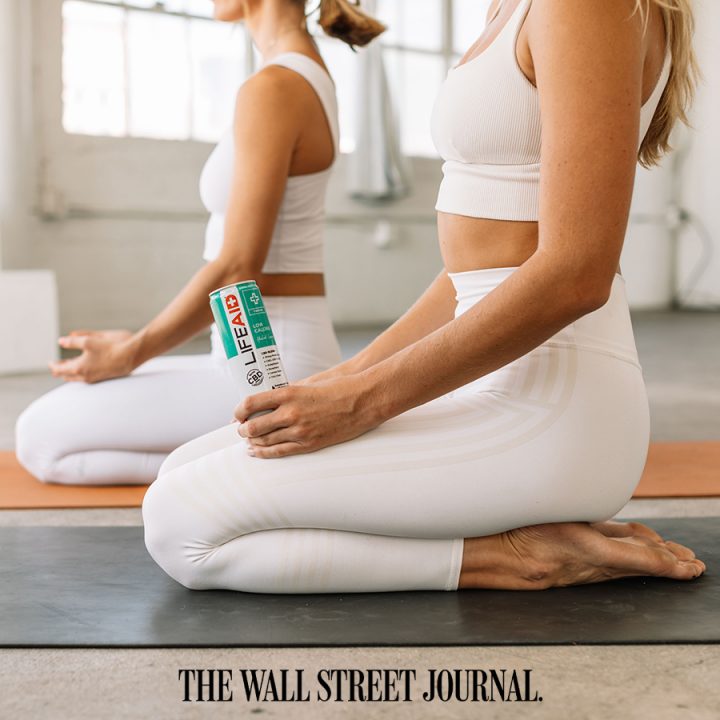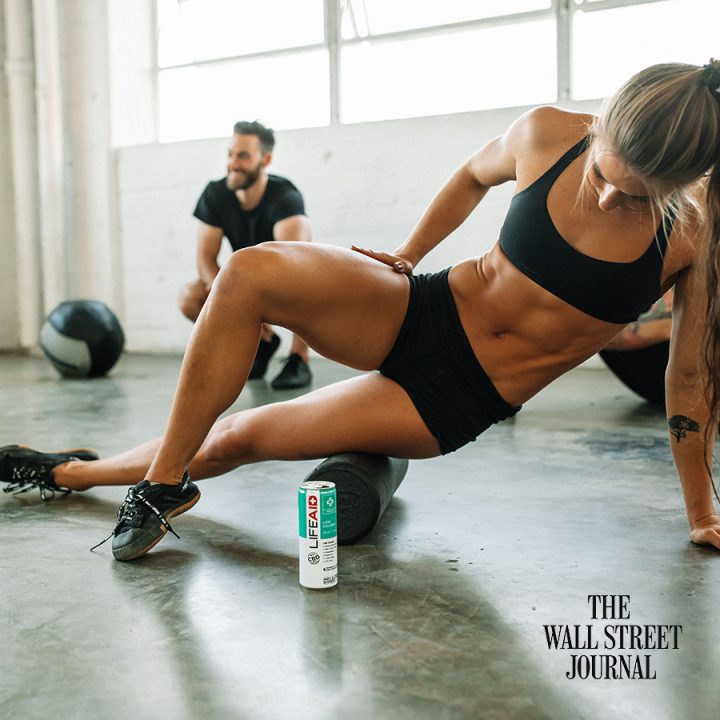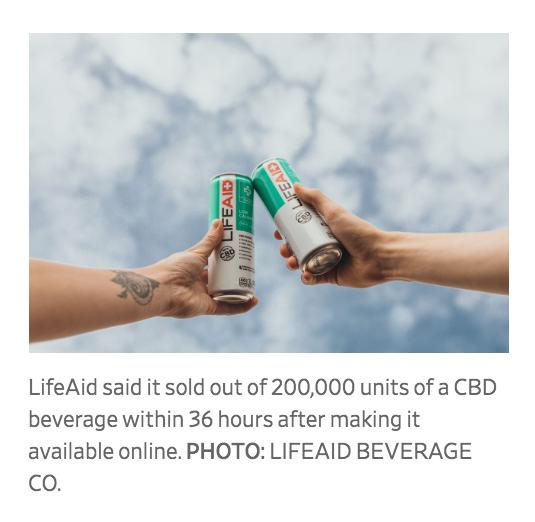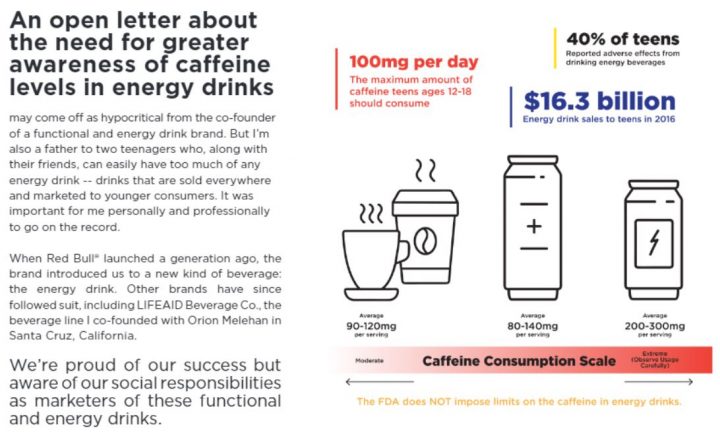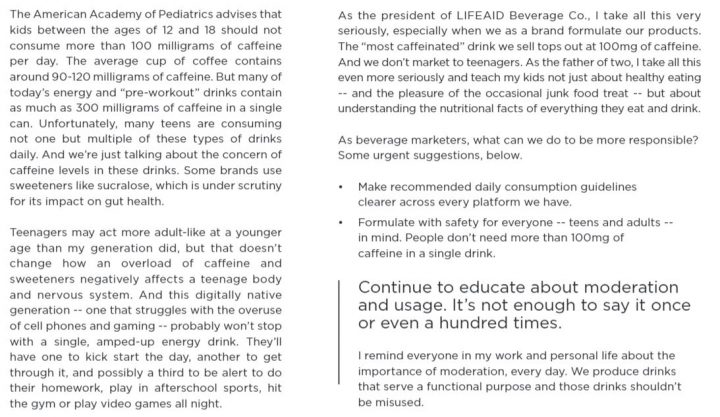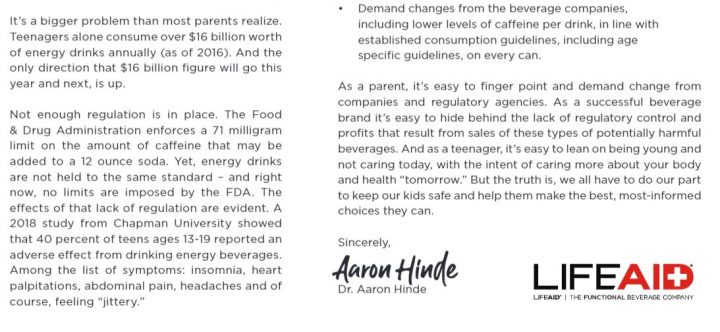Imagine your brand was built in lockstep with CrossFit and then let’s say more than a third of your sales came through gyms. Now imagine gyms were closed and the chief exec of CrossFit became an instant pariah because of offensive George Floyd and coronavirus tweets. That is the exact situation LIFEAID Beverage Co found itself in just a month ago.
“It was a spiraling shitstorm,” says LIFEAID co-founder and president Aaron Hinde of the CrossFit controversy. “We were the first company to step forward and say we’re not in alignment with [CrossFit] leadership in this way of thinking. We took a stand.” In addition to speaking out immediately, it cancelled its long-time sponsorship of the CrossFit Games.
While Hinde and co-founder/chief exec Orion Melehan were in complete agreement about the move, there was some “blowback for jumping ship on CrossFit,” says Hinde.
Faced with this wildly difficult environment, how is the brand doing? It sold out of its IMMUNITYAID product. Direct-to-consumer sales on its website have doubled and Amazon sales have tripled since March, per the company. Overall, the company is still experiencing growth numbers similar to as if it were a “normal” year with a stretch goal of hitting $50m in sales.

Upending the classic rules of marketing
So how did LIFEAID maintain its trajectory? In many ways, the LIFEAID founders fortified their brand for such a moment from the very start. Launched in 2009 by a sports chiropractor (Hinde) and a financial planner (Melehan), they decided to hyper-focus on specific audiences before building out their core brand.
They identified a wide-open space for a healthy alternative to energy drinks, colas and then-fringe drinks like coconut water. The first audience they targeted was golfers. They realized this highly desirable demographic was under-served, so their inaugural product was GOLFERAID. They followed suit with FITAID which soon became a cult favorite at CrossFit gyms.
The alliance with CrossFit was both a successful and obvious one. Hinde and Melehan met at a CrossFit in Santa Cruz, Calif., a stone’s throw from the CrossFit headquarters office. After draining $30,000 apiece from their bank accounts and sweet talking a local aluminum can supplier with a hand-written note and a gift card to Ruth’s Chris steakhouse, they were on their way.
“Focusing on early adopters in a single target market, really capturing and speaking to that market and getting them totally raving about the product and expanding from there really worked for us,” says Melehan.
Only after their sub-brands took hold that did they launch their core LIFEAID brand at major retailers like Walmart, Whole Foods and Kroger. Today, retail makes up 60% of sales with further distribution deals on the horizon.
“They upended the classic rules of marketing,” says Beverage Business Insights editor Gerry Khermouch. “They launched their grocery play after they launched their other SKUS. They are making it up as they go along.”
This includes the counterintuitive move of debuting new line extensions during the pandemic. Last month, the company rolled out FITAID and IMMUNITYAID go powder lines anticipating that consumers will be on the go soon. Additionally, it is expanding into the UK this month. Melehan says, “We’re really good at doing the opposite of what everyone else does.”
Protecting its core audience
Despite the brand’s expansion plans, it never lost sight of the audience that put it on the map: gym owners. That’s why it kicked off a program in April (opens in new window) that gives gyms $15 every time a members orders LIFEAID online and enters the gym’s unique code. The program concludes this month.
“They’ve become a much broader brand in multiple channels, but they recognize the base of the brand goes back to CrossFit. They need to maintain allegiance to individual gym owners and stick to their brand roots,” says Khermouch. “They are being shrewd in not being cavalier and taking them for granted.”
Rewarding gym owners is just the latest savvy move that also works to bolster its powerful direct-to-consumer e-commerce audience. LIFEAID has been smartly building its lists and even leveraged traditional snail mail offers in the beginning.
Of late, it has shifted sponsorship and sampling dollars deeper into social media and Amazon advertising. This includes, much like other DTC brands, staying active on Facebook. “There’s a reason why Facebook’s share price continues to climb,” says Melehan. “Even though everyone is boycotting them, small and medium-sized businesses have no other option. We are still a scrappy startup that needs to be ROI focused. The large conglomerates have other options.”
This new marketing mix appears to be working with online sales making up for much of the shortfall experienced from gym closures, per Melehan. In fact, as many as 80% of its consumers have set their carts to automatic reorder.
Success online and in traditional sales channels is now crucial for the brand, especially since one-in-four Americans say they will never return to a gym, according to a new study. Staying true to their counter-intuitive tactics, the study was commissioned by none other than the LIFEAID founders. “We were curious. As things reopen, we wanted to know what we can realistically expect,” says Melehan.
While a little planning never hurts, after everything the brand has experienced in just a few weeks’ time, LIFEAID's founders are ready for anything. Melehan says, “the decision matrix is expanding. You’ve got to make massive, multi-hundred thousand-dollar decisions within a couple of hours right now.” So far, they appear to be making the right ones.
This is a repost of the original article which you can view on TheDrum.com
All rights reserved.
> > > Stay well.
